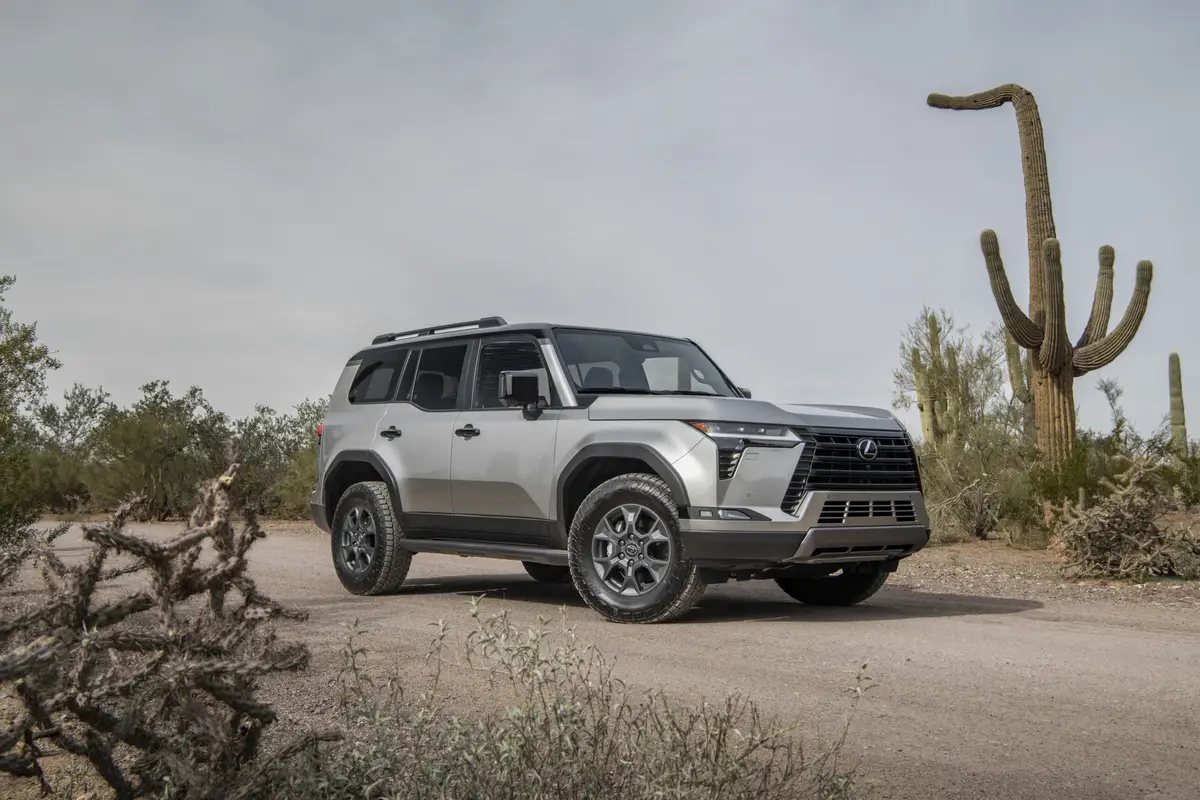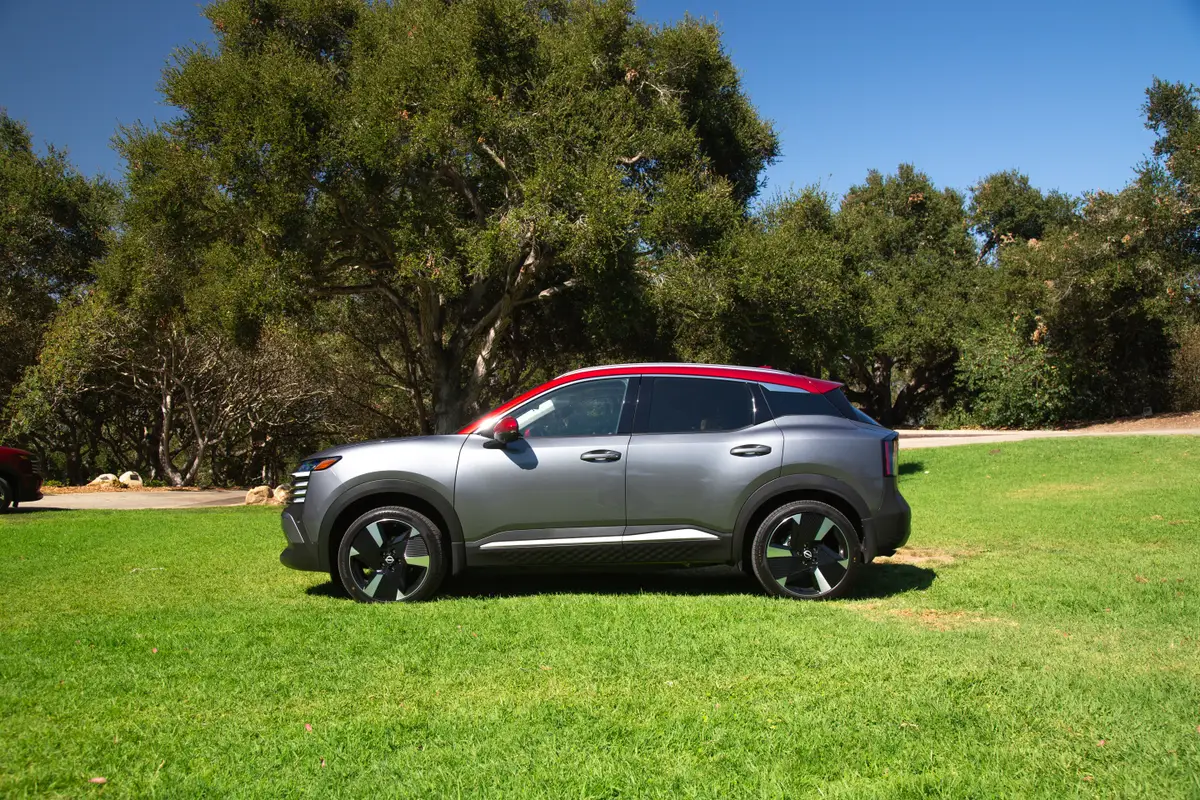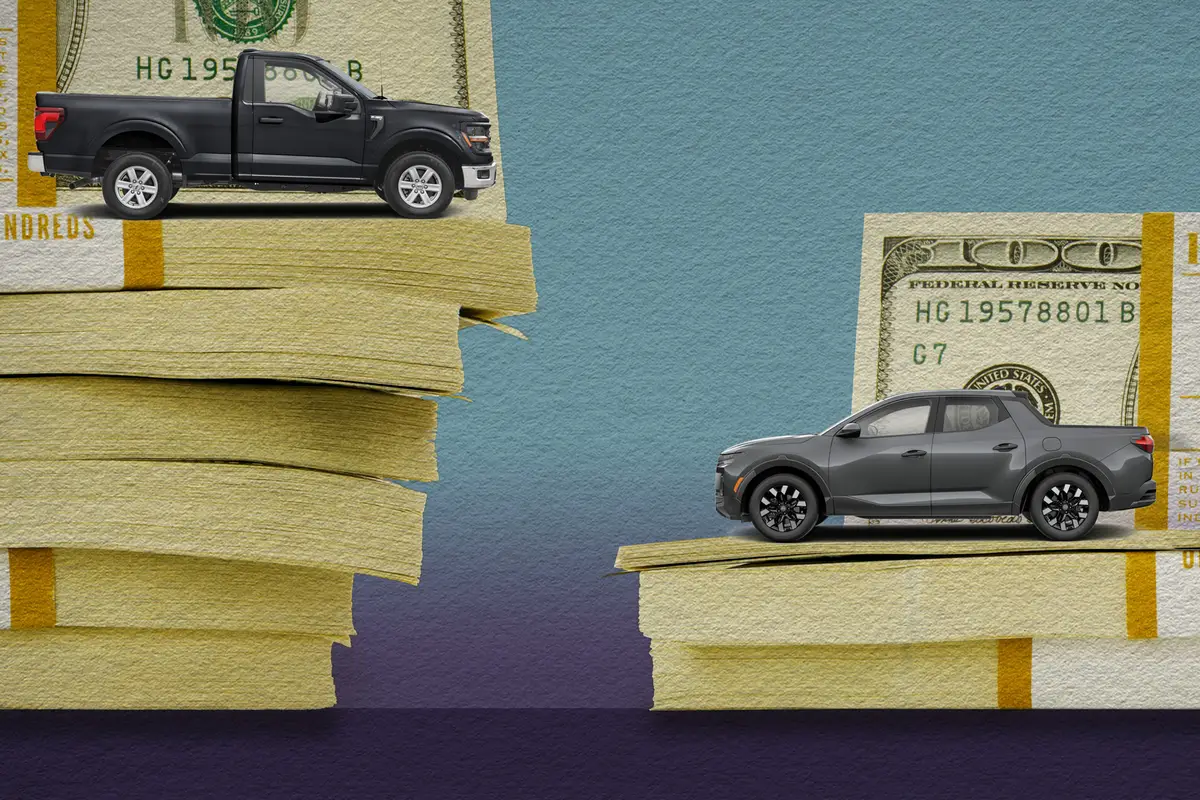Our view: 2010 Mazda Mazda3

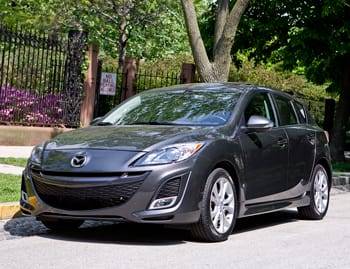
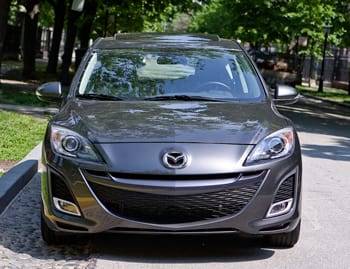
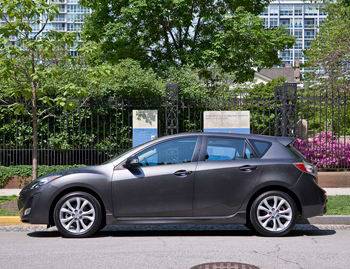
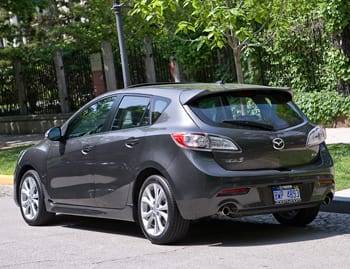
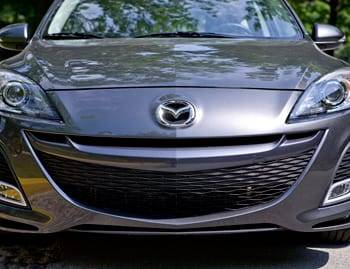

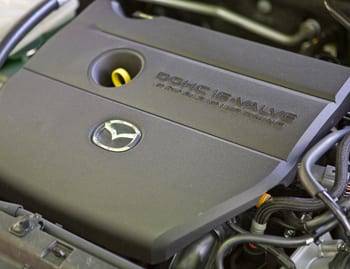
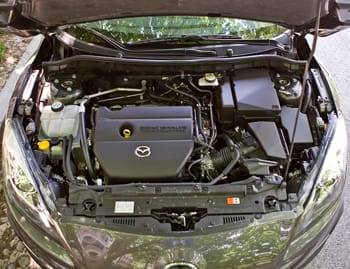
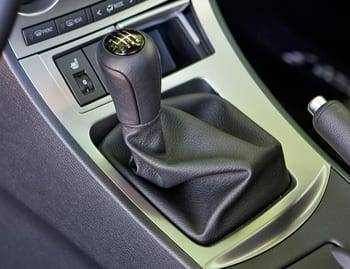
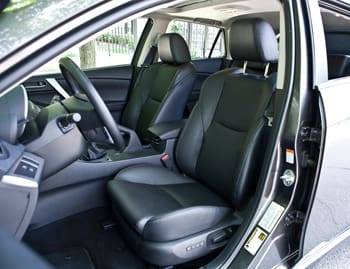
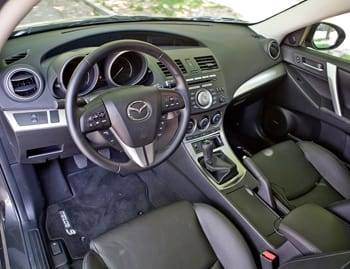
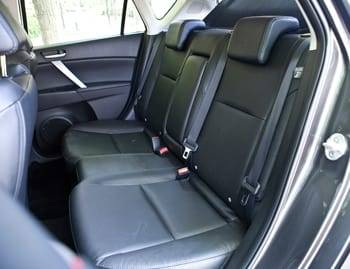

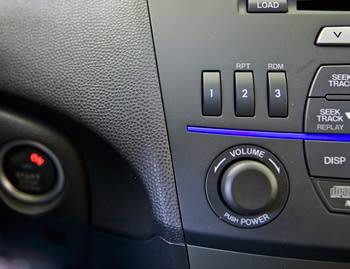
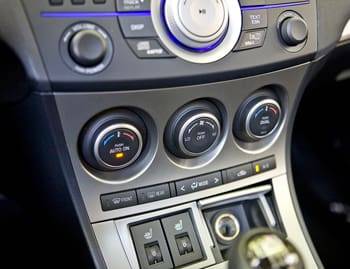
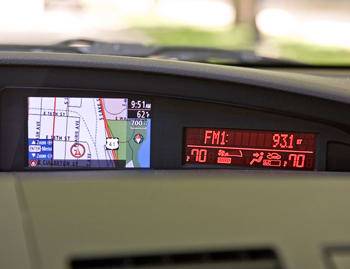
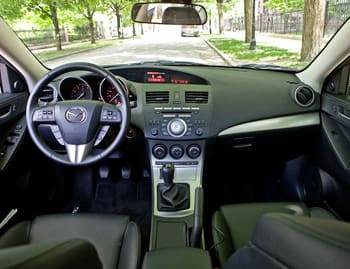
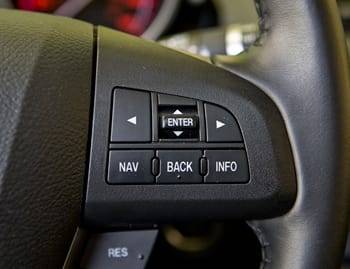
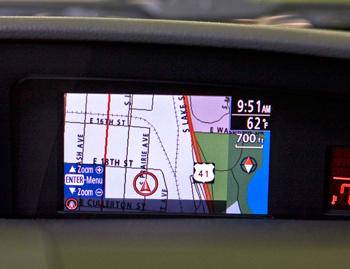
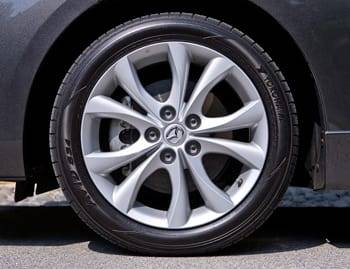
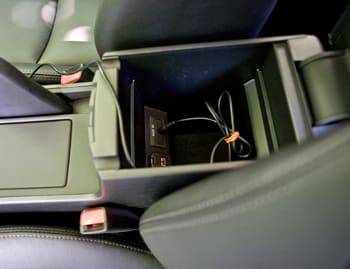
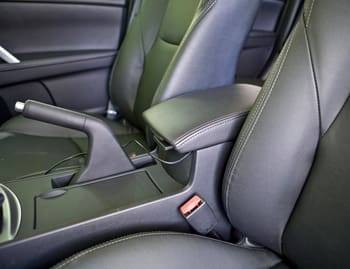
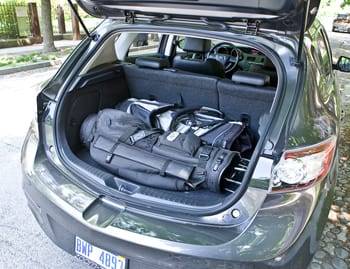
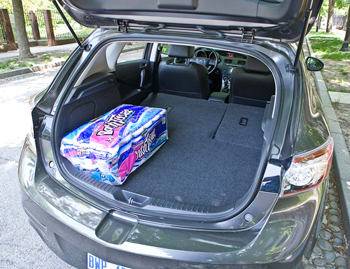
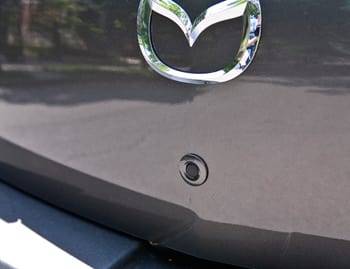
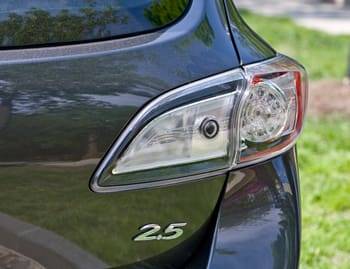
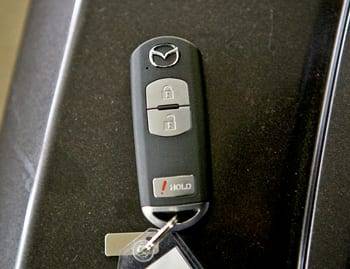



























My love affair with the Mazda3 has only grown over time. The generation that came out in 2004 is virtually unchanged, and as I explained in a 2009 review, it’s still better than many competitors that have since been introduced or redesigned. The all-new 2010 improves on that edge even more. (Compare the 2009 and 2010 models here.) I tested a four-door hatchback, which is what I’d buy, though the lowest starting price and best mileage come with the Mazda3 sedan. If you want a cheaper or more miserly car, there are better options. If you want something roomier, there’s plenty of that to go around elsewhere, too. But if you want a car that’s fun to drive yet eminently livable day to day, the Mazda 3 is it — now more than ever.
There is, however, a hitch, at least from my perspective. Imagine that you met your significant other many years ago, and with each passing year and each milestone in your relationship, your bond has grown stronger. You’re compatible in practically every way, and you can’t imagine being happier with anyone else. Then he or she goes to a plastic surgeon on the sly and gets a face-lift, and it’s so badly botched that you’re no longer attracted to him or her — you are, in fact, mildly repulsed. (Have you seen the new smiley-face grille?) Do you move on, or do you damn superficiality and stay together for all that’s good between you?
Smile and Say Cheesy
In 2004, Mazda’s petite debutante was a beauty in a class of plain, dowdy look-alikes. Even the high-class Volkswagen Golf/Jetta’s car-next-door looks were utterly forgettable. The Mazda 3 stood out. The field has gotten a bit more interesting since then, but the 3 had retained its good looks. Why did it have to go under the knife? It wasn’t broken, and it sure as hell isn’t fixed now. Yes, it still stands out … as do aged socialites who have nipped and tucked themselves into a permanent, creepy smile. Mazda has gotten happy recently, and in some cars the smiling grille works. Get a dark color like my test hatchback, and the Mazda3 is easier to live with, but against lighter paint colors the front-end treatment is too extreme, too clownish.
Baby Got Setback
Around back (I’ll suspend the plastic surgery analogy here), the taillights are a setback. They have the shiny silver-under-clear-plastic look that I never liked — despite its proliferation, from pocket rockets all the way up to Lexuses. The trend is dying, but Mazda didn’t get the memo. Unfortunately, if you choose dark paint to hide the Joker face, you make the taillights stick out even more.
Because I know tastes vary, I usually don’t heap abuse on a car’s styling, but when it comes to love, you can’t expect someone to react rationally. The best thing I can say about the Mazda3’s styling is that it’s better than the upcoming Mazdaspeed3, which adds a nose job and a collagen lip injection gone horribly awry.
How Do I Love Thee?
You can’t judge a book by its cover, even though most people do judge a car — and its owner — by its styling. If you get past the Mazda3’s styling, you’ll be rewarded time and again. The 2.5-liter four-cylinder, increased from 2.3 liters in the previous generation, has plenty of power, including healthy torque that comes at low enough engine speeds for the new six-speed manual to exploit.
With a zero to 60 mph time somewhere between 7 and 8 seconds, the Mazda3 s leaves plenty of room for the Mazdaspeed version to claim the hot-hatch title, yet the acceleration is surprisingly satisfying, even in normal street driving: The output and gear ratios are that well-matched. The shifter is a step up from the previous generation’s, with a tighter feel and appropriate length of throw for the regular model; the Mazdaspeed ought to get shorter throws. The clutch pedal is nicely executed as well, with just enough feedback for you to feel when it engages — but without too much accompanying vibration.
The brakes are equally responsive, with good feedback and fine control. The confidence they inspire makes you want to misbehave on every curve in the road, every mundane turn — wherever you go. It handles so beautifully that misbehavior becomes hard to quantify. The cited 60/40 (front/rear) weight distribution, which is typical for front-wheel drive, seems plain wrong; it doesn’t feel as nose-heavy as those numbers imply — enough so to satisfy a rear-wheel-drive snob like myself. The car can be rotated on its axis without fear of losing control.
I put the 2010 Mazda Mazda3 to the test at Road America, a track that’s really too fast for most of the production cars I had driven that day, as I had recorded in my notebook. Even some arguable sports cars earned notes like “decent performance for what it is” and “not bad for a production car.” Then I took out Mazda’s mild-mannered four-door hatchback, and it gobbled up Road America like it was a go-kart track. It has no right to perform as well as it does. The Mazdaspeed version is likely to be a monster … and I’m not talking about the styling. Zoom-zoom.
Many cars in this class have switched to electric power steering to escape the gas-robbing drain of a belt-driven hydraulic pump. A system with an electric assist motor theoretically should provide everything conventional steering does and more, but that’s seldom the case in practice. As in the previous generation, Mazda makes a compromise by employing an electric pump that runs only when needed, along with conventional hydraulic rack-and-pinion power assist. The result is excellent: precise steering with communicative torque buildup and feedback. If there’s a complaint, it’s that the steering requires a little more on-center correction when traveling at highway speeds, which can become fatiguing on long-distance rides.
As you explore the Mazda Mazda3, you start to recognize that all of its characteristics are uncommonly well matched. Every aspect of the driving experience exceeds the average. The shortcoming is that fuel economy has dropped by 1 mpg versus the 2009 — in just city driving with the larger engine and stick-shift. (The base 2.0-liter has improved 1 mpg with the manual and 2 mpg with a new five-speed automatic.) Yes, there’s more power in the 2.5-liter than there was in the 2.3, but other brands have simultaneously increased power and fuel economy in generational changes. My beloved eats too much. This isn’t another superficial rant; it’s just that times are tough and gas is expensive.
What’s Inside Counts
The outgoing Mazda3 generation had impressive interior quality — far better than the Chevy Cobalt and Toyota Corolla, to name two competitors. Once again, my 2010 test car’s was even better. The materials are good throughout, though I was bummed to see faux-metal trim where the previous generation had piano-black surfaces that were forward-thinking from the start. The faux metal isn’t overly offensive, but it’s not as realistic as some of the imitation stuff, and it’s decidedly backward-thinking. Did this stuff come from competitors who are abandoning it, along with the shiny taillights? There are signs of cost-cutting overhead, with vinyl sun visors that don’t extend and mouse-fur fabric on the ceiling in lieu of a woven headliner, but the stuff that matters most is solid. The turn-signal stalk has a quality feel, and the power door locks are quick and quiet.
The seats are firm but comfortable overall. My only beef with the driver’s seat is that it had too much lumbar support for my taste, and no adjustment. The all-important height adjustment is standard, though — on the standard manual seat as well as the power option. Likewise, a tilt/telescoping steering wheel makes it easy to find a good fit even if you share the Mazda3 with another driver.
The car’s noise signature has changed. It seems quieter overall, but that only makes the tire noise more intrusive when you cross onto certain road surfaces. Everything is peaceful on asphalt, but if you cross a bridge or get onto grooved pavement, the Yokohama tires start singing. As much as I like the new 2.5-liter, it’s raspy at higher revs. It’s not as bad here as in the Ford Escape and Fusion Hybrid we tested, but it definitely seems rougher than the 2.3-liter was.
Equipped with 17-inch alloy wheels rather than the model’s base 16-inchers, the hatchback’s ride quality is firm but more than livable. Overall, the car has a feeling of solidity and quality beyond its price. The backseat is more snug than those of the compact class leaders, and even a couple of exceptional econocars, but the sacrifice isn’t as bad as you’ll find in some small cars.
A feature I’m not keen on is the optional navigation system, whose screen is tucked under a cowl just below the windshield. It’s just too small and too far away to serve its purpose. The previous generation had a pop-up display that wasn’t as slickly integrated, but it was larger and closer to the driver without being outside one’s line of sight. Its console-mounted controls were a downside; now they’re on the steering wheel, which isn’t a bad idea in theory, but I can’t figure out why any manufacturer tries to make a toggle switch or small joystick act as an enter button, too. The thumbwheel on some Audis does double-duty better, but it’s no paragon of ergonomics either.
This relationship, like most, included conflict on how to get from point A to B, and what to do when lost. I opted not to use the nav system at all. If it puts things in perspective, I’d rather pull over and ask for directions.
Safety
In the Insurance Institute for Highway Safety’s frontal crash test, the Mazda3 scored Good. As of this writing, it hasn’t been tested for side or rear impact, so safety-conscious buyers might want to wait. Critical safety features like front, side-impact and curtain airbags are standard, as are antilock brakes. An electronic stability system is standard in the hatchback. In the sedan, the feature is unavailable on the Mazda Mazda3 i SV and i Sport, but it’s standard on the i Touring, s Sport and s Grand Touring. See all the standard safety features here.
Mazda3 in the Market
If Mazda had held the line on the 2009 Mazda3, I would have been satisfied. Instead, the automaker improved on it. In the field of small cars, you can find lower prices, roomier interiors and higher mileage than the Mazda3 four-door hatchback. Considering that it’s a hatchback, even with its backseat folded, its maximum cargo volume of 42.8 cubic feet trails most of the competition. But overall, the sacrifices are few and minor for a high-quality car that you’ll enjoy driving every day. As for how the new Mazda3 looks, well, I suppose I could ignore that and we could grow old together. How can you top having fun every day? Besides, it’s what’s inside that counts.
| Send Joe an email |

Former Executive Editor Joe Wiesenfelder, a Cars.com launch veteran, led the car evaluation effort. He owns a 1984 Mercedes 300D and a 2002 Mazda Miata SE.
Latest news
